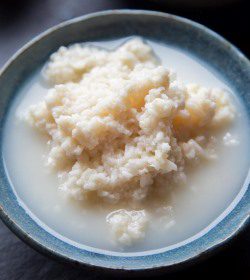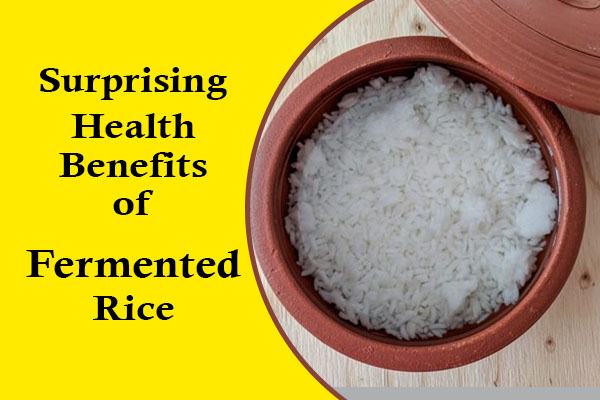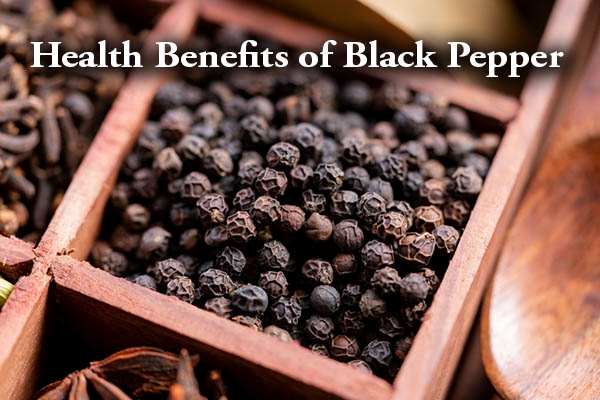Have you ever heard about fermented rice? may be! It’s not just ordinary grain; it’s like a culinary magician that’s been wowing taste buds across the world for centuries. Imagine rice grains soaking up some warm water, mixing with some amiable microbes, and it’s done! You get a delightful concoction of alcohol, organic acids, and more. Buckle up for a deep dive into the enchanting world of fermented rice!
Table of Contents
What is Fermented Rice?

Fermented Rice is a type of rice that undergoes a process of fermentation, where it is exposed to water and yeast or certain bacteria over a period of time. This fermentation process allows the carbohydrates in the rice to break down and undergo chemical changes, resulting in a unique flavor and texture.
Key Components Found in Fermented Rice
Fermented rice is a type of rice that is made by exposing rice to water and yeast or certain bacteria over a period of time, allowing the carbohydrates to break down and undergo chemical changes. Fermented rice is believed to have several health benefits, including being a good source of vitamins B6 and B12, which are otherwise rare in a normal diet. Here are some of the key components of fermented rice:
- Vitamins: Fermented rice is a good source of vitamins B6 and B12, which are essential for many bodily functions, including maintaining healthy nerves, supporting the production of DNA and red blood cells, and promoting normal brain function.
- Micronutrients: Fermented rice is rich in micronutrients like B complex, vitamin K, calcium, iron, magnesium, potassium, and selenium, which are important for overall health and well-being.
- Probiotics: Fermented rice is a gut-friendly food, rich in probiotics, which can help restore healthy intestinal flora and promote digestive health.
- Electrolytes: Fermented rice is rich in electrolytes like potassium, sodium, chloride, and selenium, which can help lower high blood pressure and prevent metabolic disorders.
The specific components of fermented rice can vary depending on the type of rice, the fermentation process, and other factors. Additionally, fermented rice water is a separate product that is made by soaking rice in water and allowing it to ferment, resulting in a nutrient-rich liquid that can be used for various purposes, including as a hair rinse.
Fermented Rice Calories
The calorie content of fermented rice can vary depending on the specific recipe and serving size. Here are some examples of the calorie content of fermented rice from various sources:
- Ferment rice: 180 calories per 100g serving (41g carbs, 4g protein, 6g fat)
- Sweet fermented rice: 34 calories per 50g serving (8g carbs, 3.4g protein)
- Home-made fermented rice: 100 calories per 100g serving (22.4g carbs, 2.6g protein, 0.2g fat)
Fermented Rice Glycemic Index
Fermented rice has been shown to have several health benefits, including being a good source of vitamins B6 and B12, which are otherwise rare in a normal diet[1,2]. However, the glycemic index of fermented rice can vary depending on the specific recipe and fermentation time. Here are some key points about the glycemic index of fermented rice:
- Higher glycemic index than some other grains: Rice has a higher glycemic index (60-90) than some other grains, such as wheat (54), maize (40-55), and barley (25).
- Lower glycemic index than non-fermented rice: Fermented rice foods have been found to have a lower glycemic index than non-fermented rice dishes.
- Lower glycemic index due to fermentation: The fermentation process can lower the glycemic index of rice by breaking down the carbohydrates and making them easier to digest.
- Fermented rice can still have a high glycemic index: Despite the potential for a lower glycemic index, some fermented rice dishes can still have a high glycemic index. For example, rice idli has a glycemic index score of 80, which is considered high.
The glycemic index of fermented rice can vary depending on the specific recipe and fermentation time. Additionally, the glycemic index is just one factor to consider when evaluating the healthfulness of a food. Other factors, such as the overall nutrient content and portion size, should also be taken into account.
Fermented Rice Benefits:
Fermented Rice is a good source of probiotics and micronutrients, including vitamins B6 and B12, which are otherwise rare in a normal diet. Here are 10 potential benefits of consuming fermented rice:
- Improves gut health: Fermented rice is a gut-friendly food, rich in probiotics, which can help restore healthy intestinal flora and promote digestive health.
- Prevents gastrointestinal problems: The fermented rice restores healthy intestinal flora and can prevent gastrointestinal ailments like duodenal ulcers, infectious ulcerative colitis, Crohn’s disease, irritable bowel syndrome, celiac disease, and infections.
- Helps prevent constipation and indigestion: Fermented rice helps to prevent constipation and indigestion problems.
- Rich in micronutrients: Fermented rice is rich in micronutrients like B complex, vitamin K, calcium, iron, magnesium, potassium, and selenium, which are important for overall health and well-being.
- Good source of vitamins B6 and B12: Fermented rice is a good source of vitamins B6 and B12, which are essential for many bodily functions, including maintaining healthy nerves, supporting the production of DNA and red blood cells, and promoting normal brain function.
- Rich in electrolytes: Fermented rice is rich in electrolytes like potassium, sodium, chloride, and selenium, which can help lower high blood pressure and prevent metabolic disorders.
- May help with weight loss: Some studies suggest that fermented rice may aid in weight loss.
- May help prevent cancer: Some studies suggest that fermented rice may have anti-cancer properties.
- May help prevent heart disease: Some studies suggest that fermented rice may help prevent heart disease by reducing cholesterol levels4.
- Versatile ingredient: Fermented rice can be used in various culinary traditions around the world. It is commonly used in dishes such as sushi rice in Japanese cuisine, as well as in traditional East and Southeast Asian recipes.
Fermented Rice Uses
Here are 10 uses for fermented rice:
- Direct consumption: Fermented rice can be eaten directly as a food. It has a unique flavor and texture, often with a slightly sour or tangy taste.
- Sushi rice: Fermented rice, known as “sushi rice,” is commonly used in Japanese cuisine as the base for sushi rolls and other sushi dishes.
- Fermented rice beverages: Fermented rice can be used to make traditional rice-based fermented beverages, such as rice wine or rice beer, which are popular in many Asian cultures.
- Fermented rice porridge: Fermented rice can be cooked into a porridge-like consistency and enjoyed as a comforting and nutritious meal.
- Fermented rice desserts: Fermented rice can be used as an ingredient in desserts, such as rice cakes or rice puddings, adding a unique flavor and texture.
- Fermented rice vinegar: Fermented rice can be used to make rice vinegar, which is a common ingredient in Asian cuisine and is used for dressings, marinades, and pickling.
- Fermented rice condiments: Fermented rice can be used to make condiments like rice bran pickles or fermented rice paste, which can add flavor and complexity to dishes.
- Fermented rice skincare: Fermented rice water, a byproduct of the fermentation process, is believed to have skincare benefits and can be used as a natural toner or facial cleanser.
- Fermented rice haircare: Fermented rice water is also used in haircare as a rinse to promote healthy hair and scalp.
- Fermented rice for gut health: Regular consumption of fermented rice is believed to improve gut health by restoring healthy intestinal flora and promoting proper digestion and absorption.
The fermentation process can be applied to other grains and ingredients, resulting in a wide variety of fermented foods with unique flavors and characteristics.
Fermented Rice Side Effects
Is fermented rice bad for you? Fermented rice is generally considered safe and beneficial for most people. However, there are some potential side effects to be aware of, especially for individuals with weakened or compromised immune systems1. Here are some possible side effects of fermented rice:
- Infections: Some microorganisms used in the fermentation process can cause infections in people with weakened or compromised immune systems, such as individuals with HIV/AIDS, cancer patients undergoing chemotherapy, and organ transplant recipients. Consuming fermented foods in these individuals can lead to side effects such as fever, diarrhea, muscle aches, and headaches.
- Gas and bloating: Fermented rice contains probiotics, which can promote the growth of beneficial bacteria in the gut. However, some people may experience gas and bloating as a result of increased bacterial activity in the digestive system.
- Allergic reactions: Some people may have allergic reactions to the specific microorganisms used in the fermentation process.
- Temporary increase in symptoms: Some people may experience temporary increases in symptoms of certain conditions, such as eczema or digestive issues when first consuming fermented rice.
The side effects of fermented rice are generally mild and temporary, and not a cause for concern for most people. However, individuals with weakened or compromised immune systems should consult with a healthcare professional before consuming fermented rice or other fermented foods.
How to Make Fermented Rice at Home?
Fermented Rice Recipe
Here are the steps to make fermented rice at home:
- Soak the rice: Rinse the rice and soak it in water for at least 6 hours or overnight. The amount of water should be enough to cover the rice completely.
- Steam the rice: Drain the soaked rice and place it in a steamer basket. Steam the rice for about 20 minutes until it is cooked but still firm.
- Cool the rice: Remove the steamer basket from the heat and let the rice cool to body temperature.
- Add the starter culture: such as yeast or specific bacteria, to the rice and mix it well with a clean spoon for about a minute to distribute it evenly.
- Add sugar: Mix 1/2 cup of sugar with water and pour it over the rice. Pack the rice in layers, making sure that the sugar water is evenly distributed.
- Ferment the rice: Cover the rice with a clean cloth and let it ferment at room temperature for about 48 hours. Stir the rice once or twice a day to distribute the starter culture and sugar water evenly.
- Check for readiness: After 48 hours, check the rice for readiness. It should have a slightly sour or tangy taste and a unique aroma. The texture of the rice can vary depending on the specific recipe and fermentation time, ranging from soft and sticky to firm and chewy.
The fermentation process can be applied to other grains and ingredients, resulting in a wide variety of fermented foods with unique flavors and characteristics.
How Fermented Rice Water Benefits to Skin and Hair?
Fermented rice water is a byproduct of the fermentation process of rice, which is believed to have several benefits for skin and hair health. Here are some benefits of using fermented rice water for skin and hair:
Fermented Rice Water Benefits for skin:
- Soothes skin conditions: in sensitive skin conditions fermented rice water can soothe skin, including acne and pimples.
- Sun protection: It can help protect the skin from the sun.
- Anti-aging: Fermented rice water can help prevent signs of aging, such as wrinkles and hyperpigmentation, by promoting collagen synthesis.
- Brightening: It can improve the complexion and promote a brighter, more even skin tone.
Fermented Rice Water Benefits for hair:
- Softening: Fermented rice water can be used as a softening conditioner for hair, making it smoother and shinier.
- Strengthening: Fermented rice water can help strengthen hair, preventing breakage and promoting healthy growth.
- Preventing tangles: Fermented rice water can help prevent tangles in hair.
- Managing eczema symptoms: Fermented rice water may help manage symptoms of eczema and skin dryness.
Remember that while there is anecdotal evidence and some scientific studies suggesting the benefits of fermented rice water for skin and hair, more research is needed to fully understand its effectiveness. Additionally, the specific methods and recipes for making fermented rice water can vary across different cultures and regions.
The Bottom Line
Fermented rice extends its influence far beyond the kitchen, leaving its mark in skincare routines, food preservation techniques, traditional remedies, and regional culinary traditions. While it offers potential health benefits and nutritional value, it’s important to approach these claims with a critical eye and consult with healthcare professionals for specific health concerns. Nevertheless, the rich history and multifaceted uses of fermented rice continue to intrigue and inspire us in various aspects of life.





One thought on “Is Fermented Rice Good For You? 10 Benefits and Uses”